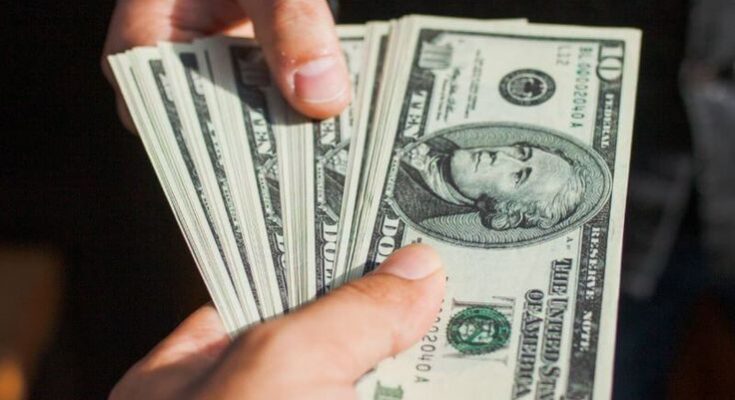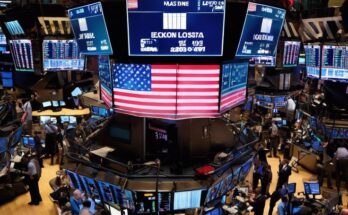The Federal Reserve (Fed) plays a central role in shaping the U.S. economy through its monetary policy, particularly when it comes to setting interest rates. Over the past few years, the Fed has been in the spotlight as it has actively adjusted interest rates in an effort to curb inflation, manage economic growth, and stabilize financial markets. The decisions made by the central bank have a far-reaching impact on not just the U.S. economy but also the global financial system. This article explores the current environment surrounding interest rates and the Fed’s policy, examining how the central bank’s decisions are being interpreted by economists, investors, and consumers.
The Federal Reserve’s Role in the U.S. Economy
Before diving into the specifics of current interest rate trends, it’s important to understand the role of the Federal Reserve. The Fed is responsible for conducting monetary policy in the United States, which involves managing the money supply and influencing interest rates to achieve specific economic goals. These goals are often referred to as the Fed’s “dual mandate” — to promote maximum employment and to maintain stable prices (i.e., control inflation).

Interest rates, particularly the federal funds rate (the rate at which banks lend to each other overnight), are one of the primary tools the Fed uses to achieve these goals. By adjusting interest rates, the Fed can either stimulate the economy or slow it down.
- Raising Interest Rates: When the economy is overheating (e.g., when inflation is rising too quickly), the Fed may raise interest rates. This makes borrowing more expensive, reduces consumer spending, and slows business investment, all of which can help cool down the economy and curb inflation.
- Lowering Interest Rates: When the economy is in a downturn, the Fed may lower interest rates to stimulate borrowing and spending. Lower rates make credit cheaper, which can encourage consumers and businesses to spend more, driving economic growth.
Over the last several years, the Fed has been responding to various economic pressures, including the COVID-19 pandemic, supply chain disruptions, and more recently, rising inflation. These factors have led to a period of heightened interest rate changes, which is central to the current economic environment.
The Interest Rate Tightening Cycle
The period of low interest rates following the 2008 financial crisis was unprecedented, as the Fed sought to stimulate the economy after the collapse of Lehman Brothers and the subsequent Great Recession. However, the COVID-19 pandemic in 2020 prompted another round of aggressive monetary easing, with interest rates being slashed to near zero in an attempt to keep the economy afloat. The goal was to ensure that businesses could access credit and consumers could continue spending despite the massive economic disruptions caused by the pandemic.
By 2021, as the U.S. economy began to recover, inflation began to rise at an alarming pace. A combination of supply chain issues, labor shortages, rising demand for goods and services, and higher energy prices drove prices up across many sectors. Inflation, which had remained relatively low in the years following the Great Recession, became a major concern for policymakers. In response, the Federal Reserve began to signal that it would soon raise interest rates to combat this inflationary pressure.
In 2022, the Fed embarked on its most aggressive tightening cycle in decades. The central bank began increasing the federal funds rate multiple times throughout the year, bringing it to levels not seen since before the pandemic. By the end of 2022, the federal funds rate was at 4.5%, and economists and investors were left speculating on how much higher the Fed might go in 2023.
Why the Fed Is Raising Interest Rates
The primary reason the Fed has been raising interest rates is to combat inflation, which had surged to levels not seen in 40 years. Inflation, when left unchecked, can erode purchasing power, destabilize financial markets, and lead to economic imbalances. The Fed’s goal is to bring inflation back down to its long-term target of around 2%, a level that is considered conducive to stable economic growth.
In response to rising inflation, the Fed’s actions have been aimed at slowing down the economy to reduce demand. When the central bank raises rates, borrowing costs rise for consumers and businesses, which leads to less spending, slower investment, and a cooling off of demand for goods and services. This, in turn, can ease upward pressure on prices.
The Fed’s actions have been in line with the economic theory that controlling inflation often requires a trade-off between controlling prices and sustaining growth. By raising rates too quickly, there’s a risk of pushing the economy into a recession, which could increase unemployment and reduce consumer confidence. On the other hand, raising rates too slowly may allow inflation to spiral out of control, leading to even more damaging economic consequences.
Impact on the Economy
The impact of rising interest rates is multifaceted, affecting different sectors of the economy in various ways.
- Consumer Spending: Higher interest rates mean higher borrowing costs for consumers. Mortgages, car loans, and credit card interest rates all rise, which can make people less likely to make big purchases. As a result, consumer spending — a key driver of economic growth — may slow. This can lead to slower economic growth, but it can also help reduce inflationary pressures.
- Business Investment: Similarly, businesses will face higher costs for borrowing. Companies that rely on credit to expand or invest in new projects may hold off on those investments when borrowing costs rise. This can have a ripple effect across the economy, as slower business investment can impact job creation and productivity.
- Stock Market: Rising interest rates are typically seen as a negative for stock markets, especially for growth stocks, which are more sensitive to changes in borrowing costs. As rates rise, the future earnings of companies are worth less in today’s terms, leading to lower stock valuations. Higher interest rates can also make bonds and other fixed-income investments more attractive, which may lead investors to move money out of equities.
- Housing Market: The housing market is particularly sensitive to changes in interest rates. Mortgage rates tend to rise when the Fed hikes rates, which leads to higher monthly payments for homebuyers. As a result, housing demand can decline, leading to a slowdown in home sales and potentially lower home prices. The U.S. housing market has already seen a slowdown in some regions due to rising rates.
- Global Impact: As the U.S. is the world’s largest economy and the U.S. dollar is the global reserve currency, changes in U.S. interest rates have significant global ramifications. Higher rates in the U.S. can lead to a stronger dollar, making U.S. exports more expensive and potentially hurting international trade. Countries with significant dollar-denominated debt may also face higher borrowing costs.
The Fed’s Dilemma: Navigating Recession and Inflation
One of the primary challenges the Fed faces in this environment is balancing the need to fight inflation with the risk of pushing the economy into a recession. Historically, aggressive rate hikes have often led to recessions, as higher rates tend to reduce consumer and business spending, leading to job losses and slower economic activity.
However, the Fed is also under pressure to act decisively to reduce inflation, which has reached levels that are seen as detrimental to long-term economic health. If inflation remains high, it could erode consumer confidence, destabilize the labor market, and ultimately hinder economic growth.
There’s also the risk that if the Fed raises rates too quickly or too aggressively, it could dampen consumer spending and business investment to such an extent that a recession becomes inevitable. The current consensus among economists is that while a soft landing — where the Fed curbs inflation without triggering a recession — is possible, it’s becoming increasingly difficult to achieve.
What’s Next for Interest Rates?
As of early 2023, the Fed’s path forward depends on several factors, including inflation data, labor market conditions, and global economic developments. The central bank is likely to continue tightening, but it may start to slow the pace of rate hikes in response to signs that inflation is cooling.
Investors, economists, and consumers will continue to watch the Fed closely to understand its next moves. The central bank is tasked with managing the delicate balance of controlling inflation without pushing the economy into a deep recession. Its decisions will have lasting impacts on financial markets, the housing market, and the broader economy for years to come.



